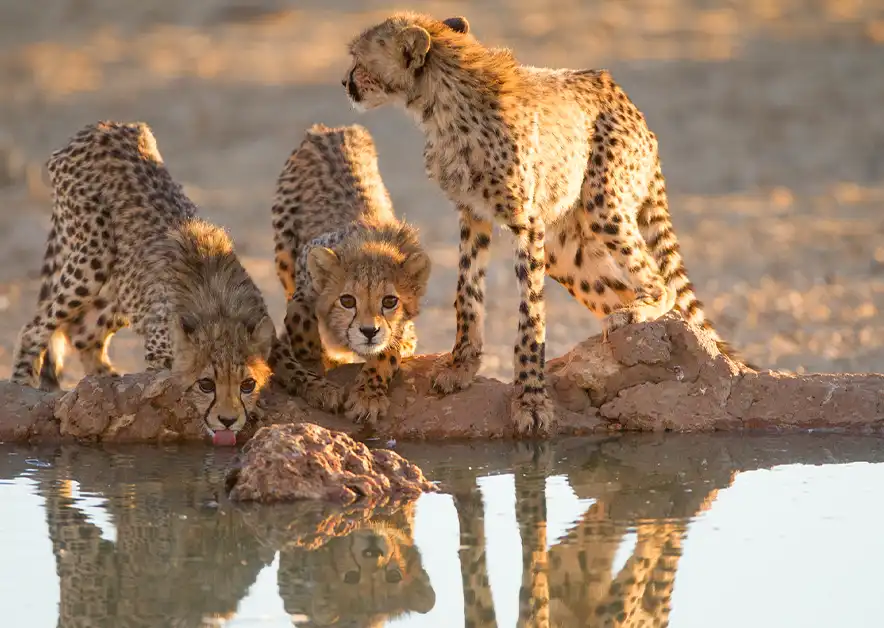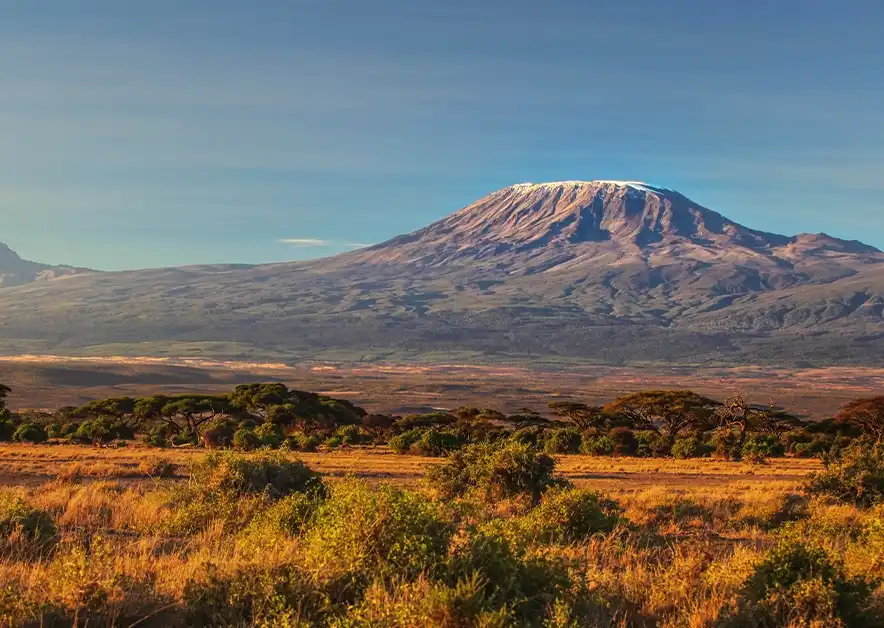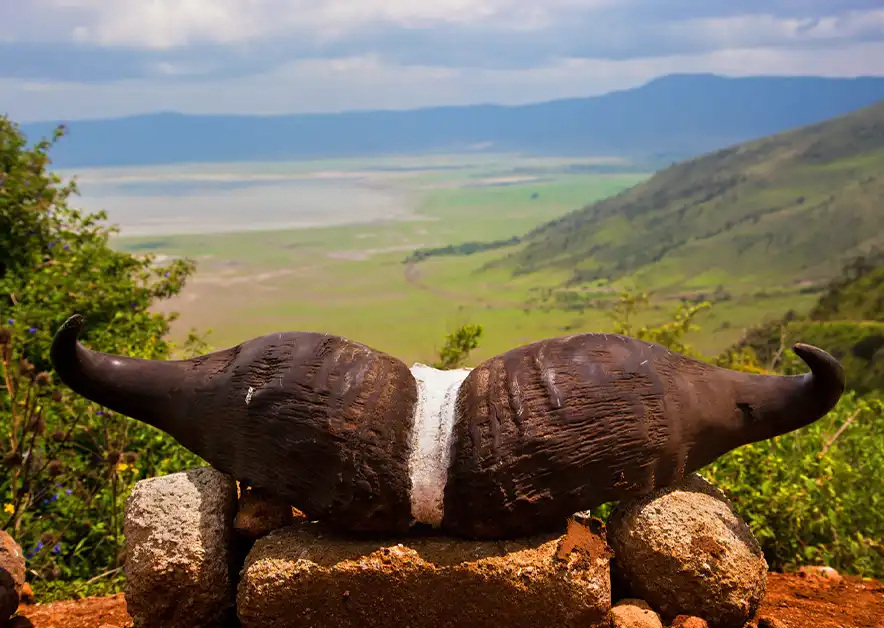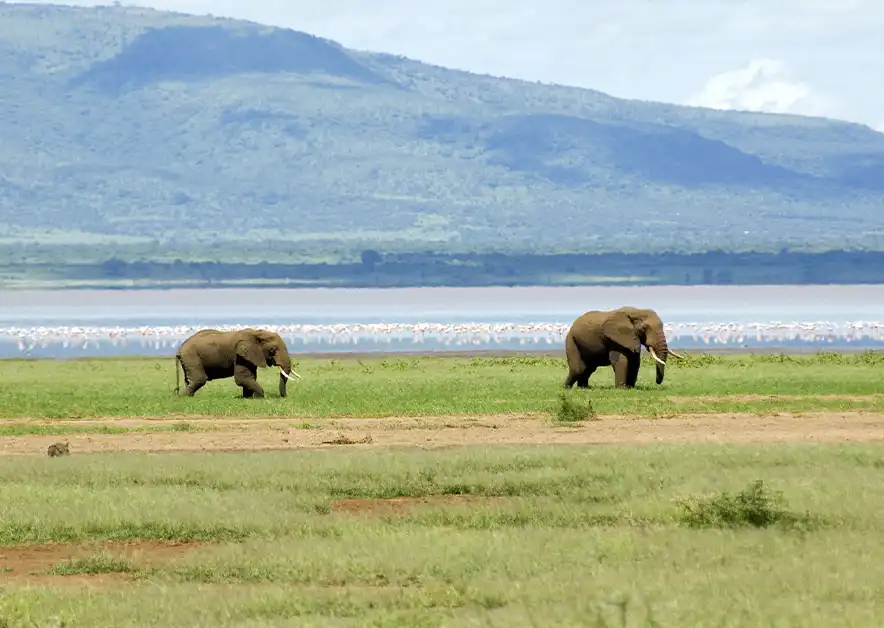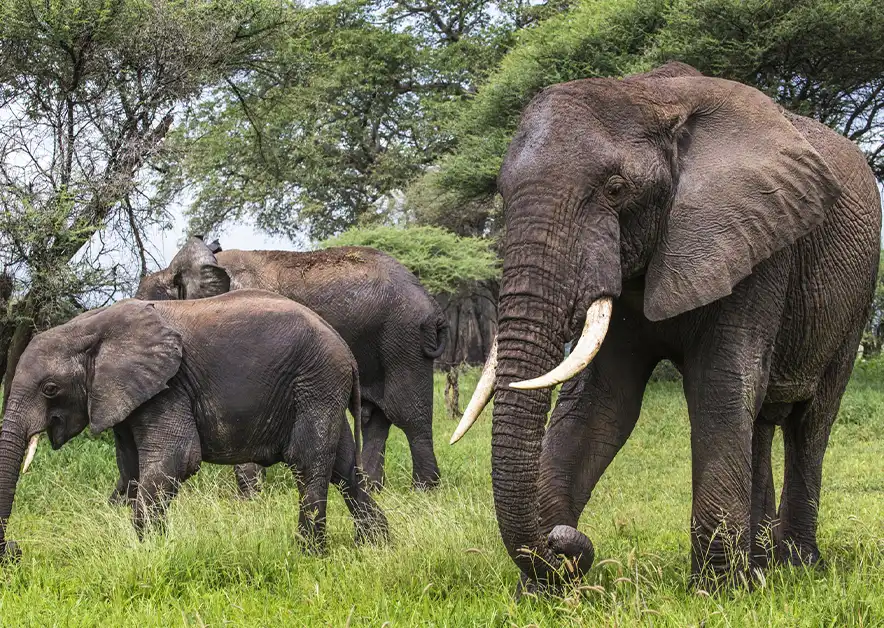Tanzanian Food
Tanzania’s cuisine reflects its rich cultural heritage, blending influences from African, Indian, Arab, and even Portuguese cooking. The food is flavorful, often using locally available ingredients such as coconut, maize, plantains, and spices. Here’s a detailed guide to Tanzanian food, along with some must-try dishes during your visit.
Staple Ingredients in Tanzanian Cuisine
Tanzanian dishes are usually centered around staple ingredients that provide energy and nutrition. These staples are often combined with fresh vegetables, meats, or fish.
| Staple Ingredient |
Description |
| Ugali |
A stiff maize (cornmeal) porridge, often served as a base for meat or vegetable dishes. |
| Rice |
Rice is common, especially along the coast. Pilau and biryani are popular dishes. |
| Cassava |
A starchy root is often boiled, mashed, or dried into flour for baking. |
| Plantains |
Green plantains are commonly boiled, fried, or used in stews. |
| Coconut |
A key ingredient in many coastal dishes, adding rich flavor to curries and stews. |
| Beans |
Used in stews or as a side dish, often served with rice or ugali. |
Popular Tanzanian Dishes
A. Main Dishes
| Dish Name |
Description |
Region |
| Ugali na Maharage |
Ugali is served with a simple, flavorful bean stew. |
Nationwide |
| Nyama Choma |
Grilled meat, usually goat or beef, marinated with spices. A popular dish at social gatherings. |
Nationwide |
| Mshikaki |
Skewered and marinated beef or goat, grilled over an open flame. Often served with kachumbari (salad). |
Nationwide |
| Pilau |
A spiced rice dish with meat, often chicken or beef, flavored with cardamom, cinnamon, and cloves. |
Coastal and Zanzibar |
| Wali wa Nazi |
Rice cooked with coconut milk, often paired with fish or chicken curry. |
Coastal and Zanzibar |
| Supa ya Ndizi |
A savory plantain soup cooked with meat or vegetables. |
Kilimanjaro Region |
| Samat |
A Tanzanian stew made with fish, coconut, and spices, often served with rice or plantains. |
Coastal Regions |
| Makande |
A hearty dish made of maize and beans often slow-cooked together. |
Northern Tanzania |
B. Street Foods
| Dish Name |
Description |
Notes |
| Chipsi Mayai |
A popular street food of French fries (chipsi) cooked with eggs (mayai) to create a thick omelet. |
Found in local eateries and roadside stands. |
| Samosas |
Triangular, fried pastries filled with spiced meat or vegetables, influenced by Indian cuisine. |
Common as a snack or appetizer. |
| Mandazi |
Deep-fried doughnuts, slightly sweetened with coconut milk or sugar. Often eaten with tea. |
Great for breakfast or as a snack. |
| Zanzibar Pizza |
A street food is unique to Zanzibar, made with thin dough, filled with meat, vegetables, or eggs, and fried on a skillet. |
Found in Stone Town markets. |
| Vitumbua |
Rice cakes made with coconut milk, soft and fluffy, often served as a snack or dessert. |
Found in local markets. |
Common Side Dishes and Accompaniments
Tanzanian meals are often accompanied by flavorful sides and condiments that enhance the main dishes.
| Side Dish |
Description |
Common Pairing |
| Kachumbari |
A fresh tomato and onion salad, often mixed with chili and lime juice. |
Pairs well with grilled meats like Nyama choma. |
| Sukuma Wiki |
Sautéed collard greens (or kale), often served with ugali or rice. |
Often a vegetarian option. |
| Mbaazi wa Nazi |
Pigeon peas cooked in coconut milk, a favorite side dish along the coast. |
Paired with rice or ugali. |
| Chapati |
A flatbread often served as a side with curries, stews, or tea. |
Popular with biryani and pilau. |
| Matoke |
Stewed plantains cooked with meat, tomatoes, and onions. |
A filling side or main dish. |
Tanzanian Desserts and Sweets
| Dessert/Sweet |
Description |
Notes |
| Kashata |
A sweet treat made from peanuts or coconut and sugar, similar to brittle. |
Commonly found in markets and streets. |
| Halwa |
A dense, gelatinous sweet made from flour, sugar, and spices, influenced by Arab cuisine. |
Particularly popular in Zanzibar. |
| Mchuzi wa Nazi |
Coconut custard served as a simple dessert, often flavored with cardamom or vanilla. |
Found in coastal regions. |
| Ndizi Kaanga |
Fried plantains, caramelized and served with sugar or honey. |
A simple but tasty dessert or snack. |
Beverages in Tanzania
Tanzanians enjoy a variety of traditional and modern drinks, from refreshing fruit juices to spiced teas.
A. Non-Alcoholic Beverages
| Beverage |
Description |
Notes |
| Chai (Tea) |
A spiced tea, often brewed with ginger, cardamom, and cloves. Tanzanian tea is strong and usually sweetened. |
I enjoyed it throughout the day, especially in the morning. |
| Juice (Mango, Passion Fruit, Baobab) |
Fresh fruit juices are widely available, especially in markets and local restaurants. |
A refreshing accompaniment to meals. |
| Tangawizi (Ginger Drink) |
A hot or cold ginger tea, brewed with fresh ginger and sometimes honey. |
Great for digestion and enjoyed throughout the day. |
| Uji |
A thick, porridge-like drink made from millet or sorghum, often flavored with sugar or honey. |
Typically served as a breakfast drink. |
B. Alcoholic Beverages
| Beverage |
Description |
Notes |
| Safari Lager |
A popular local beer brewed in Tanzania, it is light and refreshing. |
Widely available in bars and restaurants. |
| Konyagi |
A clear Tanzanian spirit, similar to gin, often mixed with tonic or soda. |
A popular alcoholic drink in social settings. |
| Banana Beer |
Locally brewed beer made from fermented bananas, especially in rural areas. |
Often used in traditional ceremonies. |
| Coconut Wine (Mnazi) |
A fermented beverage made from the sap of coconut trees, commonly found along the coast. |
Often made and consumed by local communities. |
Regional Variations in Tanzanian Food
Tanzanian cuisine varies greatly by region, offering a diverse range of flavors and ingredients.
| Region |
Food Characteristics |
Notable Dishes |
| Zanzibar (Coastal) |
Strong influence from Arab, Indian, and Swahili cuisine. Dishes are heavily spiced with cloves, cinnamon, and coconut. |
Biryani, Zanzibar pizza, seafood curries. |
| Northern Tanzania |
Heavier dishes, often featuring maize, beans, and meat, are influenced by Maasai and Chaga cultures. |
Nyama choma, supa ya ndizi, makande. |
| Western Tanzania (Lake Victoria) |
Fish is a staple, with dishes like tilapia being very common. Root vegetables and bananas are also popular. |
Smoked fish, plantain dishes. |
| Southern Highlands |
A blend of Tanzanian and Zambian influences. Cassava and maize are common staples, along with meat stews. |
Stews with cassava or maize. |
Dining Etiquette in Tanzania
- Handwashing: Many meals are eaten by hand, particularly in rural areas, so washing your hands before eating is essential.
- Sharing: Tanzanians often eat family-style, with several dishes shared at the table.
- Right Hand Only: It is customary to eat with your right hand, as the left hand is considered unclean.
- Tipping: Though not expected everywhere, a small tip (5-10%) is appreciated in restaurants.
Summary of Tanzanian Food
Tanzanian cuisine is a delightful mix of flavors, spices, and textures, ranging from the hearty dishes of the mainland to the exotic spices of Zanzibar. Whether you’re enjoying street food in Dar es Salaam or a coastal seafood feast, there’s richness and variety in every meal. Don’t miss the opportunity to try local favorites like ugali, Nyama choma, pilau, and fresh tropical juices on your Tanzania Safari Adventure!

